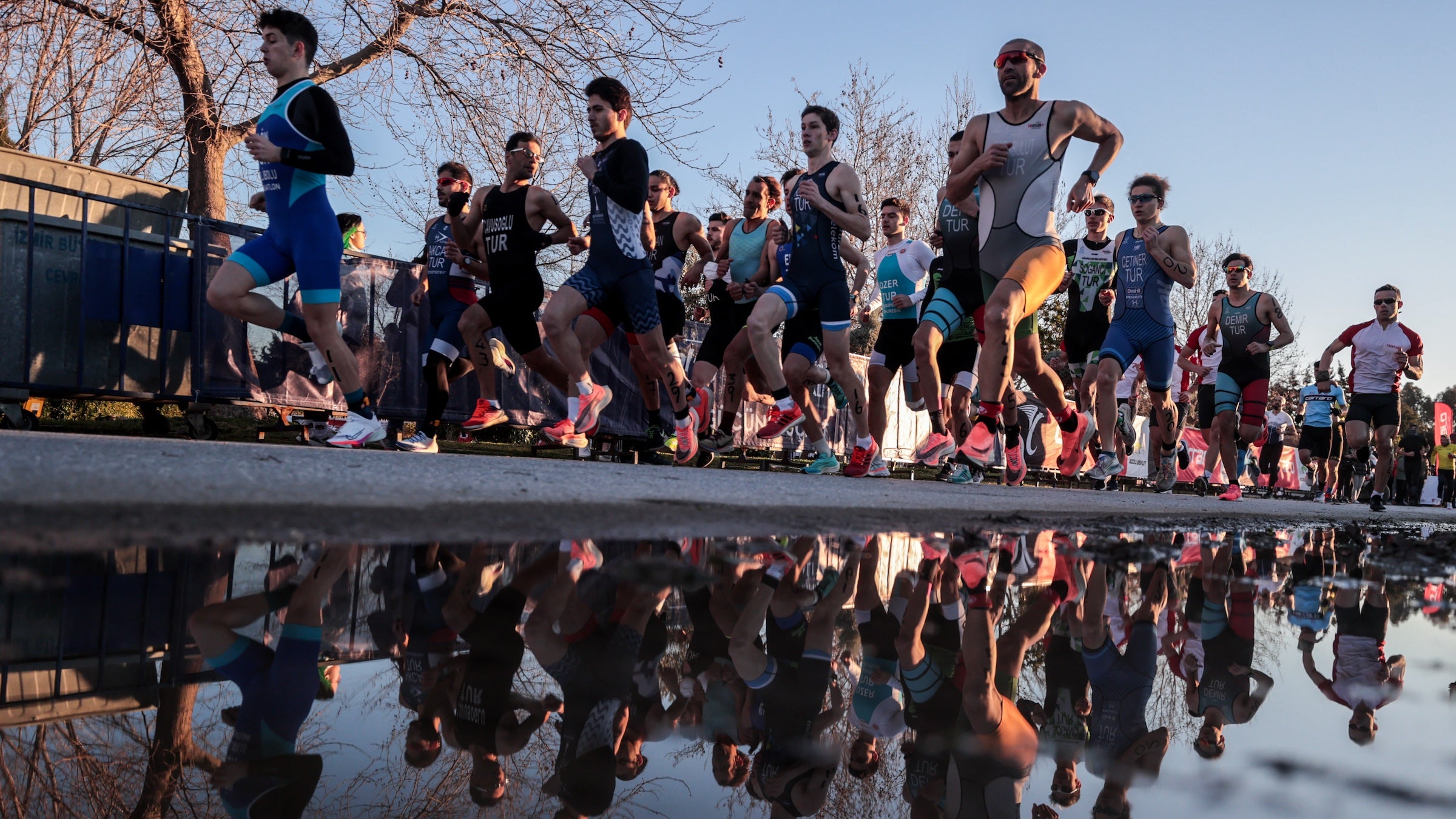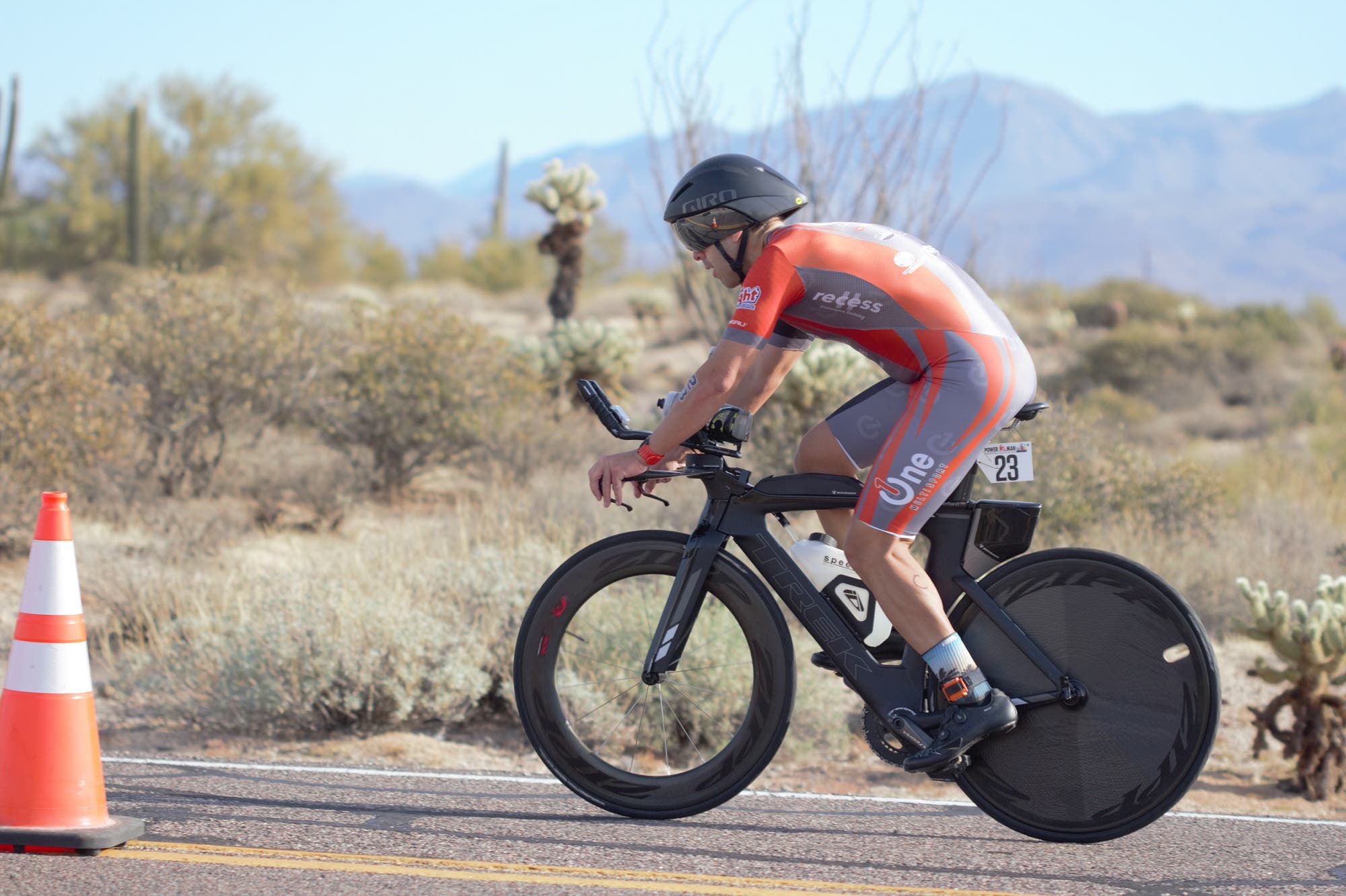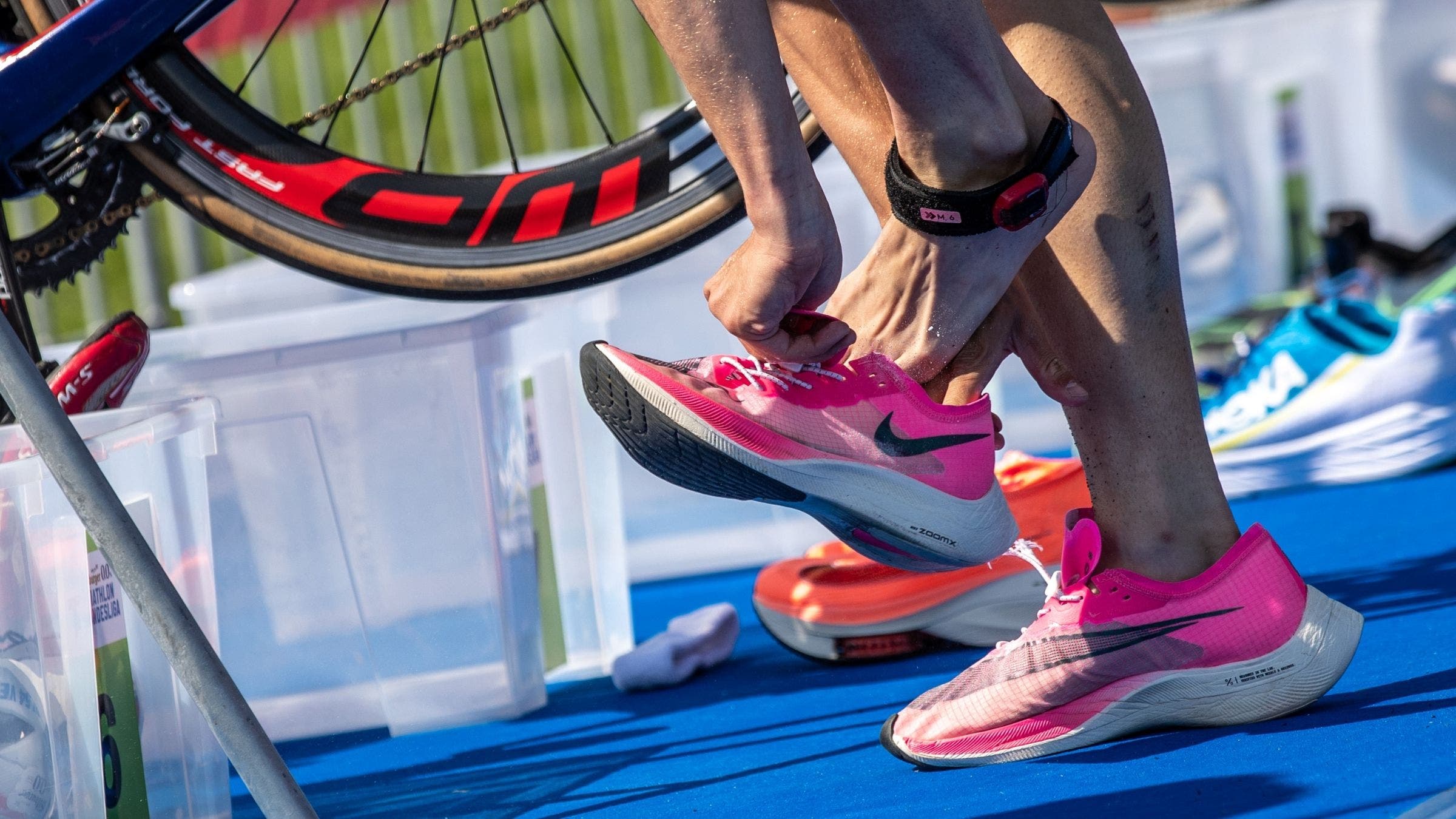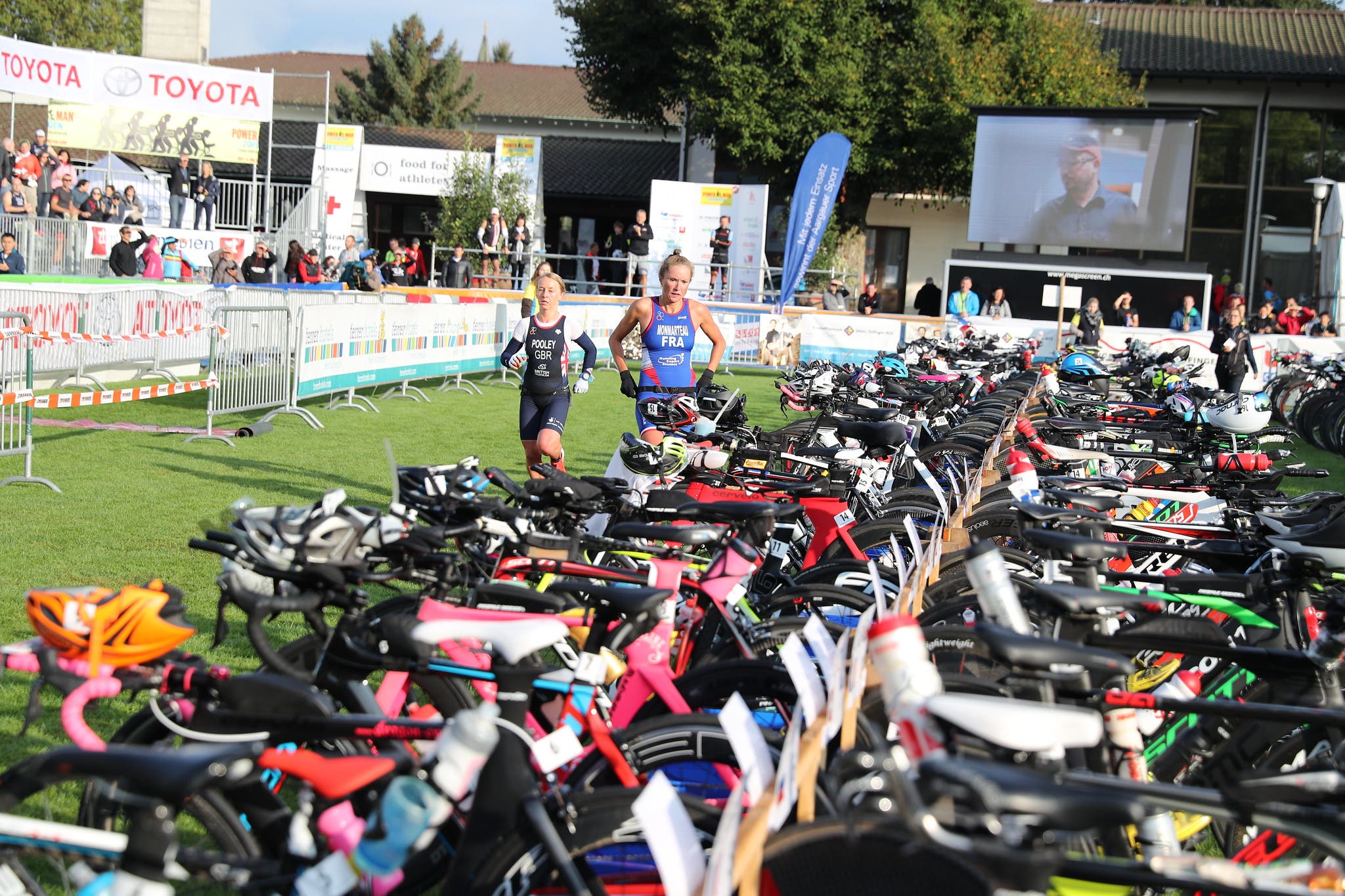A Duathlon is the Perfect Way To (Not) Get Your Tri Toes Wet

Athletes compete in the Izmir Duathlon Turkey Championship in 2022. (Photo: Mahmut Serdar Alakus/Anadolu Agency via Getty Images)
Table of Contents
A duathlon is a race where you run, cycle, run. It’s part of the suite of multisport options, including triathlon, aquabike, and aquathlon. You never have to get wet or sweat the swim conditions. If you look around your area, you’ll likely find options in sprint, Olympic, and even half-iron or full-iron distances. So if you’ve always wanted to join the multisport community but have no interest in swimming, this is the option for you.
What is a duathlon?
A duathlon is a multisport event that is traditionally arranged in a run-bike-run format. Some duathlons may position themselves as just a bike-run, but a true duathlon will include a run prior to the bike.
Unlike triathlon, which has standardized distances for each race, duathlon has far fewer regulations around distances, making it difficult to answer the question, “How far is a duathlon?” Instead of widely-adopted race lengths like a sprint, Olympic, half-distance, or Iron-distance triathlon, many duathlons work with what they’ve got – meaning you can see a variety of run-bike-run lengths based on the venue of the race. However, the USA Duathlon National Championship race always offers what’s known as a “standard” distance: 10K run, 40K bike, 5K run format.
Triathlete Victoria Anderson is also a competitive duathlete and was introduced to the sport via the ITU Long Distance Worlds Championship in 2017.
“ITU was launching a Multisport Legend Award, which allowed athletes to compete in four or more world championship events during the Multisport World Championships and earn recognition as a ‘legend’ in multisport,” Anderson said. “It struck me as an interesting challenge. One of the available events was a standard distance duathlon [10K run, 40K bike, 5K run], so I signed myself up with the intent to earn my legend status.”
Since then, Anderson has gone on to compete in a variety of duathlons to complement her tri training. “When I have an upcoming duathlon on the schedule, my coach will work in more run frequency and volume,” she said. “A standard-distance duathlon will have 15K of hard running in it. Being able to nail those runs will ultimately help you to run better in a triathlon.”
The takeaway here is that a duathlon isn’t just a triathlon whose swim didn’t make the cut – though, for the non-swimmers, that is an appeal. There are tons of reasons to add a duathlon to your schedule.

Reasons to do a du
It’s a triathlon without the swim
New York City-based endurance coach Jonathan Cane has coached all types of multisport athletes over the course of his 30-year career. He even helped to coach his wife, Nicole Sin Quee, to win her age group at the USA Duathlon National Championship in 2012.
One of coach Cane’s top reasons for adding a duathlon to your schedule is to get the body used to racing again early in the season when none of us are game to test out the frigid open waters. “In early spring, especially in North America, you’re not going to be jumping into an open water swim session until at least late June,” Cane said. “A duathlon is the perfect rust buster to get you ready for those hard efforts on the bike and run without a chilly swim beforehand.”
Because duathlon training can take place almost entirely indoors (break out the trainer and treadmill!), it’s a great way to get the legs turning over early in the season.
It’s a great way to ease into multisport
Another reason Cane is an advocate of duathlons is because they are a great way to introduce people to the idea of doing multiple sports as part of a single race. Coach Cane noted that he’s used duathlons as a way to prep athletes for triathlons, whether their first triathlon ever or a return after a few months or years away.
“If you have an important-to-you triathlon on the schedule, I’m not going to throw you on that start line having done no other races before it,” he said. “I’m going to have you add some duathlons to your schedule a few months before the triathlon so you can learn what it feels like to go hard during a multisport race.”
This is beneficial to those athletes who may be hesitant about the swim portion of a triathlon. Many worry about how they could possibly bike and then run after a challenging swim, or they become concerned about overworking themselves in the swim and panicking. Adding an early-season duathlon to the schedule can help to familiarize the body with high heart rates and pacing yourself to have enough juice for both runs and the bike portion. Gaining confidence in your ability to stay composed even when exerting yourself during a run-bike-run format can aid in building the assurance you need to be able to ace the swim.
You’ll build mental toughness for racing
Duathlons are deceptively hard. As triathlete-who-moonlights-as-a-duathlete Victoria Anderson mentioned above, the run legs may not seem like much mileage when broken into two sections, but you can be completing nearly 10 miles of all-out running at some duathlons. Stick a 25-mile bike in there, and you’ve got yourself a tough race. Because of this, your duathlon training plan should involve training your mind, too. It takes a patient and composed mindset to find success when racing a duathlon.
“Since I have a background as a swimmer, I’m used to being in the lead at the start of a triathlon,” said Anderson. “I had to reset my mental outlook for a duathlon. Athletes usually take the first run out way too fast, so I had to practice being comfortable with staying farther back in the pack on the first run and waiting to reap the benefits of this tactic on the bike and final run.” If you’re someone who likes to jet ahead early on and then find yourself losing steam partway through a triathlon, finding some local duathlons is one way to practice patience and pacing, two critical skills in a tri.
RELATED: Stay or Go? When to Follow the Race Plan (and When to Go For Broke)
As Anderson noted, it also takes a level of self-confidence to stick to your race plan even when everyone else is sprinting ahead. This can be applied to triathlon, too, especially an Ironman marathon. You may see a competitor looking fresh and springy at mile one and want to speed up, but it often pays dividends to play the long game and pass other athletes as they slow down in the final miles.
Race a duathlon, find inner confidence – sounds like a good deal to us.
Duathlon season extends your race season when it’s too cold to swim
We train to race, right? That’s what makes this whole process fun. But doing repeated triathlons, especially half- and Iron-distance events, undoubtedly takes a toll on the body. Because duathlons come in a range of distances, it can be easy and refreshing to tack on a shorter, local duathlon or two at the end of your season to squeeze the most out of your fitness.
“Many of my athletes prefer to race over training – and I don’t blame them,” Cane said. “If you can extend your race season by two months by adding in a duathlon or two, why not? It’s a fun way to stretch the race season a bit.”
Cane also noted that duathlons can be a great way to practice speedy transitions and efficiency from bike to run, then translate those skills into triathlon. Using a duathlon to home in on what nutrition works for you is another way to leverage run-bike-run in a way that could enhance your next tri.
Mixing in duathlons at the end of a tri season affords you the ability to test out equipment, nutrition, and transition skills without the pressure of a big swim-bike-run day on the line. Plus, bundling up for a fall or winter triathlon definitely beats another Saturday morning on the treadmill.

What gear do I need for a duathlon?
Duathlon is a bit simpler than triathlon because of the absence of a swim. The equipment you’ll need for a duathlon:
Gear list: Duathlon run
- A pair of running shoes with some mileage left in them
- Quick laces to make transitions easier (but this isn’t mandatory)
- Sunglasses
Gear list: Duathlon bike
- A safe, well-fitting road bike or time trial (triathlon) bike
- A helmet
- Nutrition, like gels or chews and a bottle of water or sport drink
- Water bottle cages on your bike
- A bike pump
How do I find a duathlon race near me?
Now that you know what a duathlon is, how to train for a duathlon, and duathlon distances, it’s time to find a duathlon near you. Whether you choose a global duathlon series like Powerman or a local duathlon as part of a multisport festival, you’re sure to enjoy yourself.
A good first step would be to ask around in your local triathlon, running, and cycling communities. Checking with your local bike and run shops is a great lead. Reaching out to tri clubs is another excellent resource.
You can also consult race schedule websites such as:
- TriReg.com
- Active.com
- RunningInTheUSA.com
- TriFind.com (which does include some duathlons in its listings)
You can also consult the Let’s Race app, which boasts thousands of race listings from triathlons to duathlons to marathons.

Duathlon training workout
Coach Cane suggested getting a few duathlon-specific bricks under your belt before the actual day, even if the du is just a training race for you.
Two weeks out from the race, an athlete might consider doing the following duathlon training session:
- First, set up a transition area with your run shoes, nutrition, and anything else you may need for a run off the bike.
- Ride 40K on your bike (trainer works, too) at an endurance, but not crazy-hard, pace. Then, with 10K to go in your 40K, increase the effort to a race pace.
- End the ride at your makeshift transition area and move through transition how you would on race day: quickly and efficiently.
- Then, proceed to run a hard single mile off the bike.
- Cool down with a light jog to complete the workout.
“With this workout, athletes feel the intensity of race day intensities on the bike and run, but the athlete won’t totally trash their legs a couple weeks out from the race,” said Coach Cane. “For someone whose duathlon goals are ambitious, I would also emphasize doing extra transition practice like working on moving from run shoes to bike shoes and then back to run shoes at speed.”
RELATED: 4 Simple Tips For Fast, Olympian-Style Triathlon Transitions